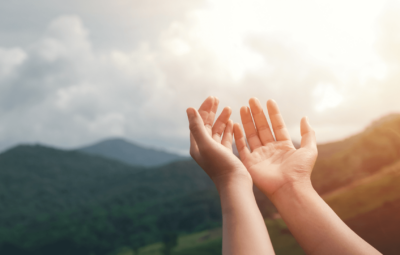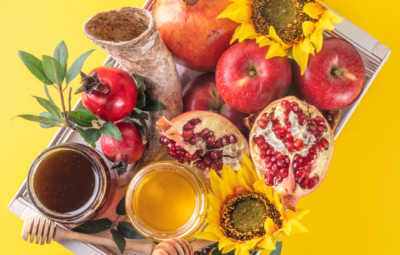In 1952, a book was published with the title, Life Is with People: The Culture of the Shtetl. It detailed the lives of the Jews of small Eastern European towns, portraying a world that was rich in connection, interdependence and communal sharing of observance, tradition, hardships and joy. Although the book later came to be criticized as overly romanticizing of shtetl life, much like the beloved musical Fiddler on the Roof, there is no doubt that the lives of many of the Jews in Eastern Europe were interwoven with one another. From communal baking to required attendance at a daily minyan, from holiday and wedding celebrations to the care of the Chevre Kaddisha, from maintenance of the mikvah to days spent in cheder, the lives of the Jews of these communities were deeply intertwined.

Around 50 years later, in the year 2000, Robert Putnam, a political scientist at Harvard University, published a book titled Bowling Alone. In it, he explored the decline of the American version of that kind of intertwined life and what it meant for our country — and this was before social media and smartphones. Over many decades, television, the internet, social media and growing inequality are just some of the elements that have contributed to the waning of social and civic clubs, neighborhood hangouts and attendance at houses of worship. This trend has continued in the last quarter-century since the book was published and has been significantly exacerbated, of course, by the pandemic.
That lack of social connection is not only painful for us individually, but it also creates an environment that fosters the kinds of deep divisions that we are seeing in our political atmosphere today. Humans need other humans, as it turns out, and loneliness is not only bad for our own health and happiness, it’s bad for our country. It’s not surprising, then, that many Jews feel nostalgic about shtetl life, despite its oftentimes crushing poverty and hunger, not to mention the ever-present political instability and pogroms. At its core, that nostalgia is a longing for the rich social fabric that has been so difficult to hold onto in America.

This is one of the things that Mordecai Kaplan, the founding thinker of Reconstructionist Judaism, understood deeply. For Kaplan, what was central to the vitality of Judaism was not halachah (Jewish law) or even a belief in a supernatural God. What was central to Kaplan was a sense of Jewish peoplehood and belonging. Maintaining a dynamic Jewish life in America required, above all, a focus on community. His vision for such communities included “a shul, a school and a pool!” He understood that in America, where Jews are not relegated to being a separate class, more was required to keep us coming together, and that in turn, investing in rich communities of learning, prayer, service, sport and social connection would become our greatest strength.
Kaplan didn’t pull these ideas out of thin air. The upcoming Yamim Noraim, or “Days of Awe,” are replete with ideas, rituals and lived experience that support community. The very fact that so many Jews gather to welcome in the new year together is its own bonding ritual. As the old joke goes: “Why does Rosenberg go to shul? To talk to God. Why does Wasserstein go to shul? To talk to Rosenberg!” Whether we gather in synagogue or for a meal or to throw breadcrumbs into the water for tashlikh, coming together at this season reaffirms our sense that we belong to a particular people and that we use a particular calendar. And celebrating together in this moment connects us to both the present and to the past.
The liturgy of Rosh Hashanah places a strong emphasis on God as our king. For many of us, this language about God is problematic in terms of gender, political orientation and supernaturalism. But from another perspective, it, too, is affirming that we are all one people, united as a nation, citizens of a common purpose. And, although the spiritual work of these holidays is often understood as individual teshuvah, the language of the liturgy is collective. Both our confessionals and our hopes are expressed in terms of “we.” Together, we call out the blasts of the shofar; together we prostrate ourselves for the great Aleinu prayer; and together we dip apples in honey, wishing for a sweet and happy new year.
For Kaplan, what was central to the vitality of Judaism was not halachah (Jewish law) or even a belief in a supernatural God. What was central to Kaplan was a sense of Jewish peoplehood and belonging.
Most of all, though, these holidays revolve around themes of what it means to be a good human being and what it means to be in community. From a Jewish perspective, those two things are intertwined. How do we show up for each other? How do we support each other? The values of the Yamim Noraim remind us that we should bring meals and visit when people are sick or comfort them when they mourn. We should discuss together ideas that matter to us, even when we disagree. We should help each other to be kind and to live meaningful lives, pursing justice and walking humbly. We should practice paying it forward, so that others will be motivated by our example.
For better and for worse, American Jewish life is vastly different from the life of the shtetl. And American life is becoming increasingly lonelier. We are missing the mark. But the High Holidays offer us a way to realign ourselves, drawing from the wisdom of the past and reconstructing how to do that in today’s world. We come together as a community and reassert our ties to one another. We remember what it means to be part of something bigger than ourselves. We think about how we should take care of each other, how to be responsible for one another and what we owe to each other.
Rabbi Hayyim of Zans told the following tale: A man had been wandering about in a forest for several days, not knowing which was the right way out. Suddenly, he saw a man approaching him. His heart was filled with joy. “Now I shall certainly find out which is the right way,” he thought to himself. When they neared one other he asked the man, “Brother, tell me which is the right way. I have been wandering about lost in this forest for several days.”

Said the other to him, “Brother, I do not know the way out either. I, too, have been wandering about here for many, many days. This I can tell you: Do not take the way that I have been taking, for that will lead you astray. And now, let us look for a new way out together.”
Many of us are feeling lost these days. There is so much that needs to be repaired in our country and our world. But there is hope, and it is found with each other. We need each other to figure it out.
*If you’re interested in hearing more about loneliness in America and what we need to do about it, Robert Putnam’s recent interview with The New York Times can be found here.











